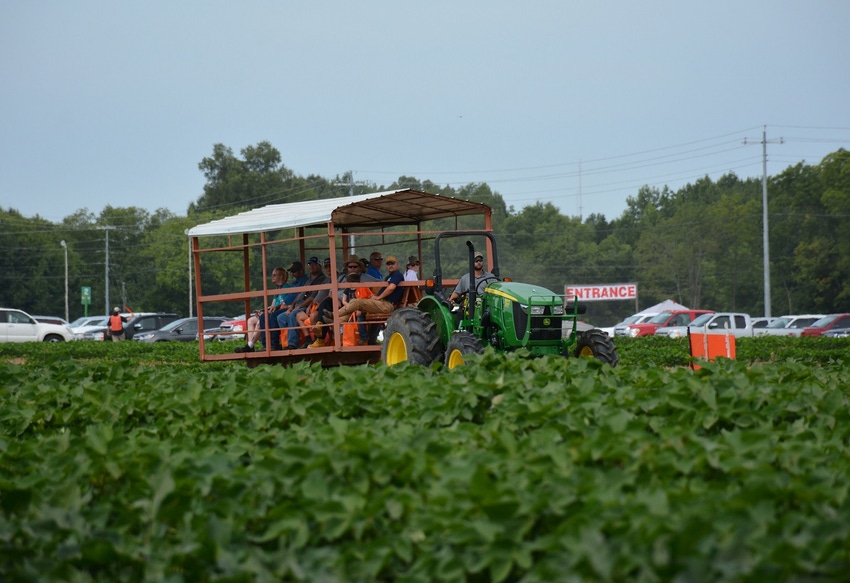
It’s been a gradual process, but thanks to a combination of factors — soil erosion, high costs for diesel, labor and equipment, and a desire to improve timeliness — conservation tillage in Tennessee has replaced conventional tillage on 96 percent of the state’s cropland.
That milestone was celebrated at the 30th annual Milan No-Till Field Day, where much of the research that has served as a catalyst for the adoption of no-till and conservation tillage methods has occurred.
Blake Brown, director of The Research & Education Center at Milan, Tenn., in an interview following the field day, said reduced tillage systems developed as a way to reduce soil erosion, initially with soybeans planted into wheat stubble, back in the 1980s. “Corn came next and finally cotton,” Brown said. “When I started work here 21 years ago, no-till cotton accounted for less than 50 percent of the acreage.” The estimate for 2018 is 80 percent, according to USDA figures.
USDA estimates show no-till accounts for 85.1 percent of soybean acreage and 75.6 percent of corn acreage. Wheat is a little lower at 64.1 percent. That puts total no-till acreage at 79.8 percent of Tennessee cropland. Other conservation tillage systems account for 16.2 percent of crop acreage, leaving conventional tillage at 4 percent.
Brown said 40 years ago conventional tillage would have claimed 100 percent of Tennessee’s row crop acreage. He said the move to no-till has been gradual “but steady. But 10 years ago, we went back a little. Resistant weeds forced some farmers to go back to tillage temporarily.
“But we regained that acreage and added to it. For no-till and conservation till systems to claim 86 percent of the state’s row crop acreage is phenomenal,” he said. “For farmers to adopt the practice to that level shows that it works.”
Yields
Research at Milan and other research units across the state bear that out. Brown said numerous studies show that no-till production systems produce yields equal to or greater than conventional tillage. “Farmers make more money with less effort — and they are saving topsoil.”
He said studies also show no-till improves water infiltration and reduces runoff. He recalls working at the center years ago with a rainfall simulator. “On conventional tilled plots, water came through muddy,” he said. “In no-till it was clear.”
A small-scale rainfall simulator was on display at the field day and the results mirrored Brown’s recollection. Water through the conventional tillage simulation came out dark, muddy, and little penetrated into the soil profile. The conservation till demonstrations lost little water to runoff and what did move out of the simulated field was clear. Most soaked into the soil profile.
Brown said the 30th Milan Field Day was a good one. “Weather was good. We always say we get the hottest day of the year for the field day. Today was pleasant. Attendance numbers look good. We had a good program and a lot of interest.”
Brown said no-till and conservation till system adoption has been exceptional. A new push, he added, is use of cover crops. “We’ve used cover crops for years, but not the kinds of mixes we’re researching today.”
Some new ones, he said, generate a lot of biomass that poses new challenges for planters to manage the residue and assure seed to soil contact.
“We’ve learned a lot,” he added, “but we have more to learn. Every new wrinkle brings on new opportunities. The more we know, the more we have to learn.”
About the Author(s)
You May Also Like






